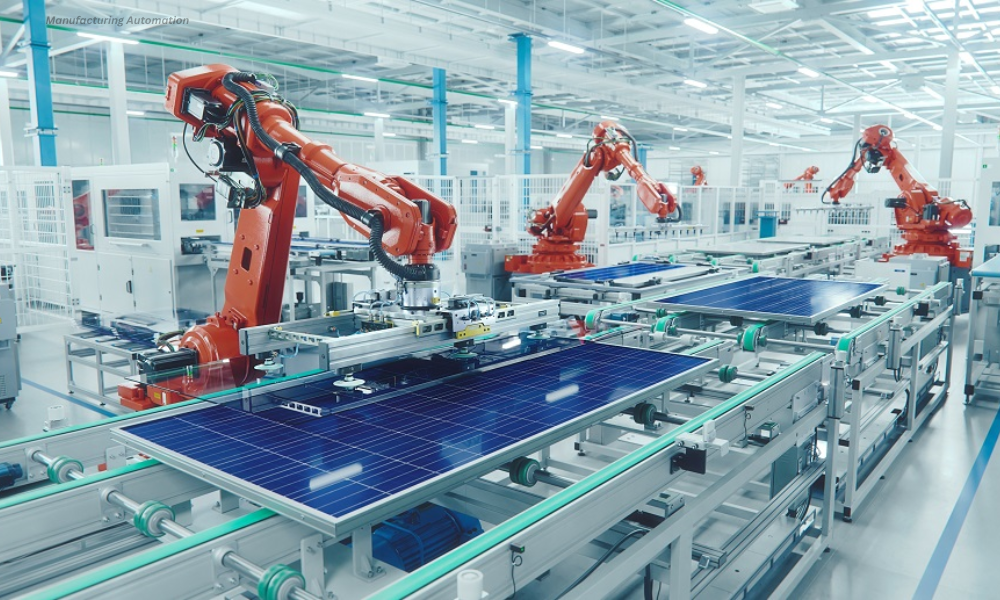Manufacturing Automation: A Complete Guide

What is Manufacturing Automation?
Manufacturing automation refers to using technology to control production processes with minimal human intervention. Whether you’re looking to boost efficiency or cut operational costs, manufacturing automation is the answer. Right from the start, let’s get this straight: if you run or plan to run a manufacturing setup, automation isn’t optional it’s a must-have if you want to stay competitive in today’s tech-driven world.
Table of Contents
Why Manufacturing Automation Matters
Automation isn’t just about robots on an assembly line. It’s about streamlining processes, reducing errors, and scaling faster than ever. Imagine producing more, faster, and with near-perfect accuracy—all while spending less in the long run.
Real-World Example
Look at Tesla. Its production line uses AI, robotics, and advanced sensors to build vehicles faster and smarter than traditional automakers.
Types of Manufacturing Automation
Fixed Automation
This is used for mass production with a predefined set of tasks. Think bottling plants or car assembly lines.
Programmable Automation
Best for batch production. Here, machines can be reprogrammed for different products, ideal for customized manufacturing.
Flexible Automation
It adapts to multiple tasks without reprogramming. It’s highly efficient for environments that need high product variety.
Industrial Robotics
These robots do everything from welding to packaging. They’re tireless, fast, and increasingly intelligent.
Key Technologies Driving Automation
AI and Machine Learning
Machines can now “learn” from data. For instance, they detect anomalies in real-time and adjust operations automatically.
IoT in Manufacturing
Sensors gather real-time data from machines, helping managers optimize performance instantly.
Robotic Process Automation (RPA)
Often used for backend tasks like inventory tracking or quality checks.
3D Printing (Additive Manufacturing)
It allows fast prototyping and custom part production with little waste.
Benefits of Implementing Automation
Increased Productivity
Automation doesn’t sleep. It boosts output by working 24/7 without errors.
Enhanced Quality Control
Machines are more precise than humans. Automation reduces defects and maintains consistent quality.
Lower Operational Costs
While the setup may be pricey, the long-term savings are massive. You’ll spend less on labor, errors, and material waste.
Better Workplace Safety
Hazardous tasks are assigned to machines, reducing injury risks for workers.
Challenges in Adopting Manufacturing Automation
High Initial Investment
Yes, automation costs money upfront. But remember—it’s an investment, not an expense.
Workforce Displacement
While some jobs go, new tech-based roles open up. Retraining is key.
Integration with Legacy Systems
Old machinery might not play well with new tech. Plan your upgrades wisely.
How to Start with Manufacturing Automation
Assessing Your Current Workflow
Identify the bottlenecks and repetitive tasks in your production line.
Setting Goals and KPIs
What do you want from automation? Faster output? Lower costs? Be specific.
Choosing the Right Tools
Pick tech that fits your needs. Don’t go for flashy tools—go for useful ones.
Training Your Workforce
Your staff must know how to operate and maintain the new systems.
Real-World Examples of Automation Success
Automotive Industry
Brands like BMW and Ford use automation to speed up production while maintaining precision.
Food and Beverage
Companies use automated packaging and quality control to ensure hygiene and speed.
Electronics Manufacturing
From PCB assembly to soldering, automation handles delicate tasks efficiently.
Future Trends in Manufacturing Automation
Hyperautomation
Combines AI, ML, and RPA to automate everything that can be automated.
Smart Factories
Connected machines communicate and self-optimize, creating truly intelligent production lines.
Predictive Maintenance
Machines predict failures before they happen, saving time and money.
Is Automation Right for Your Business?
Automation isn’t one-size-fits-all. Ask:
- Do you need speed?
- Is quality a concern?
- Are you facing labor shortages?
If the answer is yes, automation could be your game-changer.
Common Myths About Automation
“It Will Kill All Jobs”
Wrong. It will change jobs. Tech roles will rise, and routine jobs will shrink.
“Only Big Factories Need It”
Even small manufacturers can automate certain tasks. Start small and scale up.
Conclusion
Manufacturing automation is not a trend—it’s the future. By automating your factory floor, you’re not just keeping up; you’re leading. The sooner you adapt, the better your chances of staying ahead in a highly competitive market.
FAQs
What is the most cost-effective way to start automation?
Start small automate one process, analyze results, then expand based on ROI.
Will automation replace all factory jobs?
No. It will redefine them. Think tech-savvy roles rather than manual ones.
What industries benefit most from manufacturing automation?
Automotive, electronics, food & beverage, and pharmaceuticals lead the way.
How long does it take to see ROI from automation?
Typically within 6 to 18 months, depending on your setup and goals.
Do I need technical expertise to run an automated factory?
Yes and no. While some roles require training, many platforms are user-friendly with intuitive interfaces.






